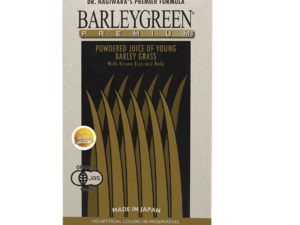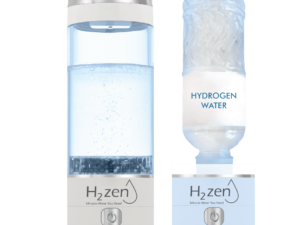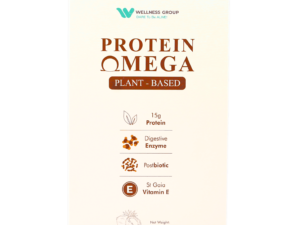What is the Healthiest Thing for Your Gut? Gut Health Guide
Did you know 1 in 7 people globally struggle with chronic digestive issues like IBS? In Western nations, 15% of adults face daily discomfort from symptoms like bloating and irregular bowel movements. This silent epidemic highlights why nurturing the gut’s ecosystem matters more than ever.
The human microbiome houses over 38 trillion microorganisms – outnumbering our own cells. These tiny residents in the intestines don’t just break down food. They produce vitamins, regulate immunity, and even influence mental health through the gut-brain axis. When this delicate balance falters, it can trigger inflammation, fatigue, and long-term health risks.
This guide cuts through the noise to reveal science-backed strategies for digestive wellness. From fermented foods to stress management, small daily choices create lasting changes. Readers will learn how to identify triggers, boost beneficial bacteria, and prevent common issues like diarrhea or constipation without drastic overhauls.
Emerging research shows a thriving gut microbiome may lower risks of diabetes, heart disease, and autoimmune disorders. It’s not just about avoiding discomfort – it’s about building resilience from the inside out.
Key Takeaways
- 15% of Western populations experience IBS, underscoring widespread gut health challenges
- Microbiome balance impacts immunity, nutrient absorption, and disease prevention
- Dietary adjustments and lifestyle habits offer immediate symptom relief
- Chronic digestive issues correlate with higher risks of systemic inflammation
- Practical daily choices can sustainably improve microbial diversity
Understanding the Gut Microbiome

Click to LEARN MORE
Imagine a bustling city inside your digestive tract where trillions of microbes collaborate to keep your body running smoothly. This living ecosystem – made up of bacteria, fungi, and other microorganisms – acts like a personal health manager. It doesn’t just process meals but shapes how your entire system functions.
The Role of Gut Bacteria
Beneficial bacteria serve as frontline workers in this microbial metropolis. They break down complex carbs, create vitamins like B12 and K, and crowd out harmful invaders. Over 1000 species coexist in a balanced gut, each contributing unique skills – some even produce mood-boosting neurotransmitters.
These microbes also maintain the intestinal lining. Think of them as construction crews repairing a protective wall. When this barrier weakens, toxins can leak into the bloodstream – a condition researchers call “leaky gut.”
Impact on Overall Health and Immunity
Your colon houses 70% of immune cells, constantly communicating with gut bacteria. This partnership determines how well your body fights infections and regulates inflammation. Studies show people with diverse microbiomes have:
- Stronger responses to vaccines
- Lower allergy risks
- Better blood sugar control
Scientists recently identified 50 bacterial strains linked to vitality and 50 tied to health issues. This discovery helps explain why some people stay energetic while others battle fatigue – it’s all about which microbes dominate their gut neighborhoods.
Exploring What is the Healthiest Thing for Your Gut?
Nutrition experts agree: microbial diversity thrives on variety. Dr. Will Bulsiewicz emphasizes, “Eating 30+ plant-based items weekly gives your gut bacteria the tools they need to flourish.” This approach fuels beneficial microbes while crowding out harmful strains through natural competition.

Key Nutrients and Their Benefits
Four powerhouse components work together to nourish digestive ecosystems:
| Nutrient | Role | Top Sources |
|---|---|---|
| Fiber | Feeds good bacteria | Oats, lentils, berries |
| Polyphenols | Reduces inflammation | Green tea, dark chocolate |
| Omega-3s | Strengthens gut lining | Flaxseeds, walnuts |
| Probiotics | Boosts microbial balance | Kimchi, kefir |
Research reveals Mediterranean-style eaters host 40% more diverse gut microbes than typical Western diet followers. This diversity links to better weight management and stronger immunity. Whole foods deliver nutrients in combinations supplements can’t replicate – like fiber working with antioxidants to reduce oxidative stress.
Tim Spector’s 30-plant challenge isn’t about radical changes. Adding herbs, different colored veggies, and mixed nuts counts toward the goal. Each unique plant compound acts as fertilizer for specific bacterial strains, creating resilient digestive networks.
Top Nutrient-Rich Foods for a Healthy Gut
Building a thriving digestive ecosystem starts at the grocery store. Certain staples act like premium fuel for microbial communities, combining probiotics, fiber, and essential nutrients. Let’s explore the top performers that nourish both body and bacteria.
Fermented Foods and Their Probiotic Power
Traditional preservation methods created some of nature’s best probiotic sources. Kimchi and sauerkraut undergo lactic acid fermentation, multiplying beneficial bacteria. A 2023 study found daily kefir consumption increased gut diversity by 19% in eight weeks.
These tangy options deliver live cultures that:
- Compete with harmful pathogens
- Enhance vitamin production
- Strengthen intestinal barriers
Whole Grains and Leafy Greens for Optimal Fiber
Oats and quinoa provide soluble fiber that feeds bacteria producing butyrate – a short-chain fatty acid protecting colon cells. Dark leafy greens offer dual benefits: spinach’s sulfoquinovose sugar specifically fuels Bifidobacteria strains linked to immunity.
| Food Group | Key Nutrients | Gut Benefits |
|---|---|---|
| Fermented Foods | Live cultures, enzymes | Boost microbial balance |
| Whole Grains | Beta-glucan fiber | Fuel SCFA production |
| Leafy Greens | Folate, vitamin K | Support bacterial growth |
| Low-Fructose Fruits | Inulin, vitamin C | Enhance nutrient absorption |
Pairing berries with yogurt creates a power duo – probiotics meet prebiotics. This combination helps beneficial strains colonize more effectively than either nutrient alone. Over time, these choices help build microbial communities resistant to digestive upsets.
The Role of Prebiotics and Probiotics in Gut Health

Click to LEARN MORE
Your gut’s microscopic residents need two things: nourishment and reinforcements. Prebiotics act as fertilizer for beneficial microbes, while probiotics deliver fresh troops to maintain microbial balance. Together, they form a powerful alliance for digestive resilience.
Benefits of Prebiotic Foods
Prebiotics are indigestible fibers that reach the colon intact. There, they stimulate growth of good bacteria like Bifidobacteria and Lactobacilli. Regular intake supports:
| Food | Key Prebiotic | Health Impact |
|---|---|---|
| Garlic | Inulin | Boosts immunity |
| Bananas | Resistant starch | Regulates blood sugar |
| Oats | Beta-glucan | Enhances fullness |
| Asparagus | Fructooligosaccharides | Improves calcium absorption |
Studies show daily prebiotic consumption can increase healthy bacteria populations by 35% in three weeks. These fibers also strengthen intestinal barriers, reducing leaky gut risks.
Examples of Probiotic-Rich Options
Probiotics introduce live microorganisms that directly influence gut health. Fermented foods offer diverse strains:
| Source | Active Strains | Digestion Benefit |
|---|---|---|
| Kefir | Lactobacillus kefiri | Reduces bloating |
| Kimchi | Leuconostoc mesenteroides | Supports regularity |
| Yogurt | Bifidobacterium lactis | Enhances lactose digestion |
| Tempeh | Rhizopus oligosporus | Breaks down anti-nutrients |
Pairing probiotic-rich miso with prebiotic-rich onions creates a synergistic effect. This combo helps beneficial strains colonize faster and outcompete harmful microbes. For lasting results, include both types in daily meals.
How Diet Diversity Enhances the Gut Microbiome
Think of your gut as a garden that thrives on variety – the more colors you plant, the richer the harvest. Research shows people consuming 30+ plant types weekly develop microbiomes 40% more diverse than those eating fewer than 10. This microbial richness acts like an internal shield against digestive discomfort and inflammation.
Colorful Plates Feed Bacterial Teams
Each hue in fruits and vegetables represents unique polyphenols – natural compounds that gut microbes transform into health-boosting metabolites. Red bell peppers contain luteolin for immune support, while purple cabbage delivers anthocyanins that reduce oxidative stress. “Different bacterial strains specialize in breaking down specific plant compounds,” explains microbiome researcher Dr. Erica Sonnenburg.
The Mediterranean diet exemplifies this principle. Followers regularly consume olives, artichokes, and herbs rarely found in Western meals. This variety explains why they host more Faecalibacterium prausnitzii – bacteria linked to lower inflammation markers.
Simple changes make achieving diversity easier:
- Mix three bean types in soups
- Add edible flowers to salads
- Rotate nut varieties weekly
Dark chocolate and green tea count toward the 30-plant goal too. Their polyphenols reach the colon intact, fueling microbial fermentation processes that strengthen gut lining integrity. Over time, this approach helps microbiome communities adapt to dietary shifts without distress.
Lifestyle Habits to Support Digestive Wellness
Nightly rest does more than recharge energy – it reshapes your digestive ecosystem. Daily routines influence microbial communities as powerfully as dietary choices, creating ripple effects across physical and mental health.

Three Pillars of Microbial Balance
Quality sleep maintains gut bacteria diversity through circadian rhythms. A 2022 study revealed night-shift workers had 30% fewer beneficial microbes than day workers. Just two nights of poor sleep increases inflammation markers and reduces insulin sensitivity.
| Habit | Impact on Gut | Recommended Practice |
|---|---|---|
| 7-9 Hours Sleep | Boosts microbial diversity | Keep bedroom temperature at 18°C |
| Daily Movement | Enhances gut motility | 30-minute brisk walks |
| Stress Management | Protects gut-brain axis | 4-7-8 breathing technique |
Exercise acts like a probiotic delivery system. Low-intensity activities increase blood flow to the intestines, helping beneficial strains thrive. Even gardening or yoga sessions improve microbial balance.
Chronic stress triggers a domino effect – cortisol surges weaken intestinal barriers, allowing toxins into the bloodstream. This explains why 65% of people with anxiety report concurrent stomach issues. Combining meditation with targeted probiotic supplements offers dual protection.
Meal timing completes the puzzle. Eating within a 12-hour window aligns with the microbiome’s natural rhythms. Late-night snacks disrupt microbial repair cycles, much like interrupting a construction crew mid-project.
Contact and Business Hours - Wellness Group Information
Prioritizing digestive wellness requires both knowledge and support. Wellness Group bridges this gap by offering tailored solutions that align with modern Malaysian lifestyles. Their team simplifies the journey toward better intestinal health through science-backed strategies and compassionate guidance.
Connect via WhatsApp: +60123822655
Instant access to health professionals makes improving nutrition habits effortless. Clients receive same-day responses for urgent concerns like bloating or irregular digestion patterns. This service proves particularly valuable when addressing signs of an unhealthy gut needing prompt attention.
Operating Hours for Malaysian Customers
Wellness Group maintains flexible scheduling to support busy routines:
| Days | Hours |
|---|---|
| Mon-Fri | 9:30 AM – 6:30 PM |
| Weekends | 10 AM – 5 PM |
These extended hours allow working professionals to book consultations during lunch breaks or after office hours. Weekend availability helps families address health concerns without weekday time constraints.
Nutritionists craft plans balancing dietary needs with cultural preferences – crucial for maintaining intestinal balance in Malaysia’s diverse food landscape. Follow-up sessions ensure clients adapt smoothly to new routines while achieving lasting health improvements.
Whether optimizing daily meals or addressing chronic discomfort, Wellness Group’s experts provide tools for sustainable change. Their commitment to accessible care makes prioritizing nutrition and digestive balance achievable every day of the week.
Conclusion
True gut health thrives on balance, not perfection. Research confirms enjoying nutrient-dense foods like nuts, beans, and colorful produce forms the foundation of microbial diversity. Aiming for 30 different plants weekly feeds beneficial bacteria while leaving room for occasional treats.
Omega-3 fatty acids from seeds and walnuts strengthen gut lining integrity, reducing disease risk linked to inflammation. Even small swaps matter – replacing red meat with lentils or adding mixed berries to meals supports healthier bowel function. Studies show those prioritizing plant variety have 40% lower risks of digestive discomfort.
Moderation proves key. Ultra-processed snacks or alcohol in limited amounts won’t derail progress if balanced with fiber-rich choices. For targeted support, explore probiotic benefits through fermented foods or supplements. This approach keeps meals enjoyable while nurturing microbial allies.
Ultimately, understanding your microbiome’s needs transforms eating from guesswork to strategy. Each bite either fuels protective bacteria or strains promoting imbalance. With mindful choices, anyone can cultivate resilience against modern threats to digestive wellness.
FAQ
How does gut bacteria influence overall health?
Gut bacteria play a critical role in digestion, nutrient absorption, and immune function. They help break down fibers, produce short-chain fatty acids like butyrate, and protect against harmful pathogens. A balanced microbiome also supports mental health and reduces inflammation.
Which foods are highest in probiotics?
Fermented foods like yogurt, kefir, kimchi, and sauerkraut are rich in live probiotics. These beneficial bacteria help replenish the gut microbiome, improve digestion, and strengthen the intestinal barrier against toxins.
Why is fiber important for gut health?
Fiber from whole grains, leafy greens, and legumes feeds good gut bacteria, promoting their growth. This process produces anti-inflammatory compounds and supports regular bowel movements, reducing the risk of digestive disorders like IBS.
Can stress impact gut function?
Chronic stress disrupts the gut-brain axis, altering gut motility and microbial balance. Practices like mindfulness, adequate sleep, and moderate exercise help manage stress levels, fostering a healthier gut environment.
What are prebiotics, and where are they found?
Prebiotics are non-digestible fibers in foods like garlic, onions, bananas, and asparagus that nourish beneficial bacteria. Including them in meals enhances microbial diversity and improves nutrient absorption.
How does diet diversity boost the gut microbiome?
Eating a variety of colorful fruits, vegetables, and nuts introduces different polyphenols and nutrients. This diversity encourages a resilient microbiome, linked to lower risks of obesity, diabetes, and autoimmune conditions.
Are fatty acids beneficial for the intestines?
Omega-3 fatty acids from walnuts, chia seeds, and fatty fish reduce gut inflammation and strengthen the intestinal lining. They also support the growth of bacteria linked to improved metabolic health.
What lifestyle habits harm gut health?
Excessive sugar intake, lack of sleep, and sedentary habits can deplete good bacteria. Prioritizing whole foods, staying hydrated, and avoiding processed snacks help maintain a balanced gut ecosystem.

Khloe Tan
Khloe Tan is a Certified Nutritionist, Corporate Wellness Trainer, and Holistic Health Specialist with over 15 years of experience in the health and wellness industry. She has delivered more than 100 talks nationwide, inspiring and educating diverse audiences on nutrition, lifestyle, and sustainable wellness. Her work has positively impacted over 3,000 lives, and she continues to champion holistic approaches to well-being in both corporate and personal settings.
Feature Product
-
Hydrogen Water FIlter/Generator
H2zen Portable (White/ Blue)
RM2,600.00 Add to cart Buy NowRated 0 out of 5





